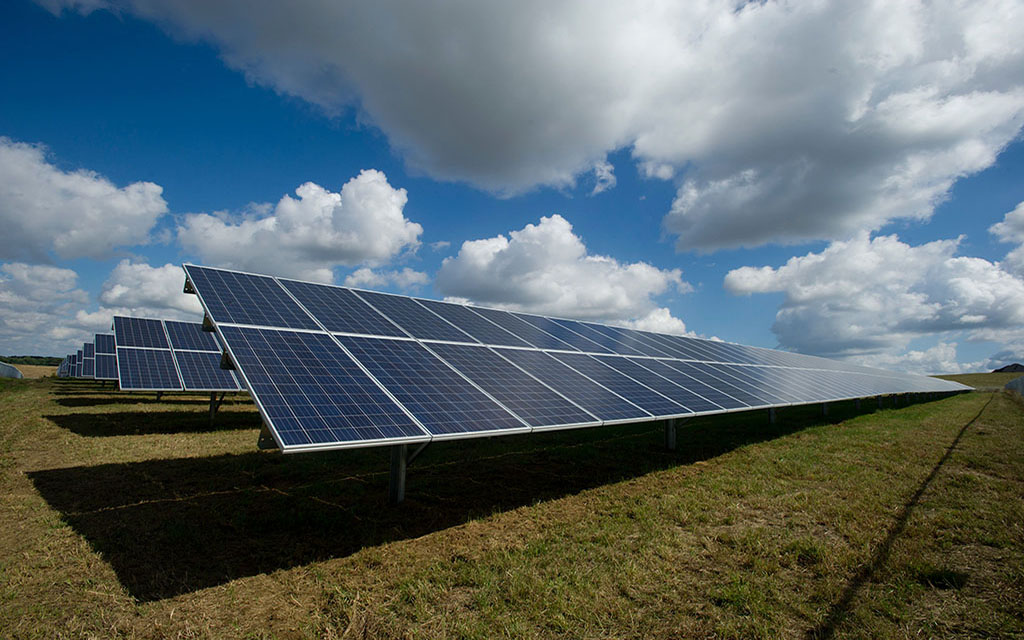What is a solar panel?
Definition of a solar panel
Solar panels are a form of renewable energy technology that harnesses the power of the sun to generate electricity. A solar panel, also known as a photovoltaic panel or a solar cell panel, is a device that is used to absorb the sun's rays and convert them into electricity or heat. The main principle of the solar panel is to convert photons into electrons through the photoelectric effect, and then collect electrons together to form usable electrical current. The technology behind solar panels has been improving steadily over the years. With more efficient panels now available that can produce more electricity from a smaller physical area.
Description of a solar panel
The structure of a solar panel typically consists of multiple components. The most critical one is a semiconductor crystal, usually made of materials such as silicon, gallium, and arsenic. Under certain conditions, these semiconductors can convert photons into electrons, thereby generating direct electrical current. In addition, solar panels also include components such as waterproofing, protection, and support to protect transistor operations and extend their lifespan.
Applications of solar panels
Here we look together at the range of applications for solar panels, which including:
1. Residential and Commercial Use
Solar panels can supply electricity to homes and businesses.Rooftop solar panels are increasingly popular for providing a cost-effective and sustainable source of electricity.
2. Transportation
Solar panels can power boats, cars and other vehicles. Solar-powered electric cars are becoming more common as the technology continues to improve.
3. Remote and Off-Grid Areas
Solar panels can provide electricity to remote and off-grid areas without access to the grid. Solar-powered generators and lamps are already in use in many areas where electricity is lacking.
We can also find solar panels in other areas. In space, solar panels are one of the preferred energy sources for spacecraft, and can provide enough electricity to complete all tasks for astronauts. In the home field, solar lights, solar water heaters, solar chargers, and other products are also increasingly popular, gradually replacing traditional energy products.
The benefits of a solar panel
The benefits of solar panels are numerous. They are a clean and renewable source of energy, which means that they do not produce any harmful emissions or waste products. At a time when climate change is becoming an increasingly pressing concern, investing in solar panels can help reduce our overall carbon footprint and pave the way towards a more sustainable future.
In addition, solar panels can also help to reduce energy costs, as they provide a source of free electricity that can be used to power homes and businesses. While the initial investment in solar panels can be high, the long-term savings on energy bills can make them a cost-effective option in the long run.
Production Process of Solar Panels
The production process of solar panels mainly includes the following steps:
1. Preparation of Ingot
First, the technician heat and melt the high-purity silicon in a crucible. Then, the technician adds dopants (such as boron or phosphorus) to the silicon melt to make it p-type or n-type.When the temperature reaches a certain level, the technician inserts a small seed crystal into the melt, which then grows into a silicon ingot.
2. Slicing
Technicians use a wire saw to slice the silicon ingots into thin wafers. These wafers are typically 180-200 microns thick.
3. Surface Treatment
The silicon wafers are polished and cleaned to remove any rough surfaces and impurities before they undergo thermal diffusion, which helps to create a junction between the p-type and n-type silicon layers.
4. Thin-Film Deposition
Technician use thin-film deposition to deposit an antireflective coatings to silicon wafers. This helps to reduce reflection and improve the efficiency of the solar panels.
5. Wiring and Encapsulation
Front and rear contacts are applied to the solar cell to enable electrical current to flow. The technician then encapsulate the cells to protect them from the environment.
6. Quality Control and Assembly
The solar cells are tested before they are assembled into solar panels. Solar panels are typically made up of a matrix of solar cells, which are connected in a series or parallel circuit to produce the required voltage and power output.
Challenges for solar panels
What is one of the main challenges to the widespread adoption of solar panels? It is the dependence of solar panels on sunlight. This means that they may not be as effective in areas with cloudy or overcast weather conditions. However, advances in energy storage technology are helping to alleviate this problem. This is because energy storage technology can store excess energy generated during periods of full sunlight and use it during periods of low sunlight.
Conclusion
In summary, solar panels work by converting sunlight into electricity through the photovoltaic effect. They are made up of solar cells, which are made of silicon semiconductor materials, and they produce DC electricity that is converted to AC electricity by an inverter. Solar panels can generate significant amounts of electricity in areas with abundant sunlight and can be a clean and renewable source of energy.
Overall, solar panels are a promising and rapidly developing form of renewable energy technology. The world is continuing to look for more sustainable ways to reduce our negative impact on the environment. Solar panels will undoubtedly play an important role in this shift.
